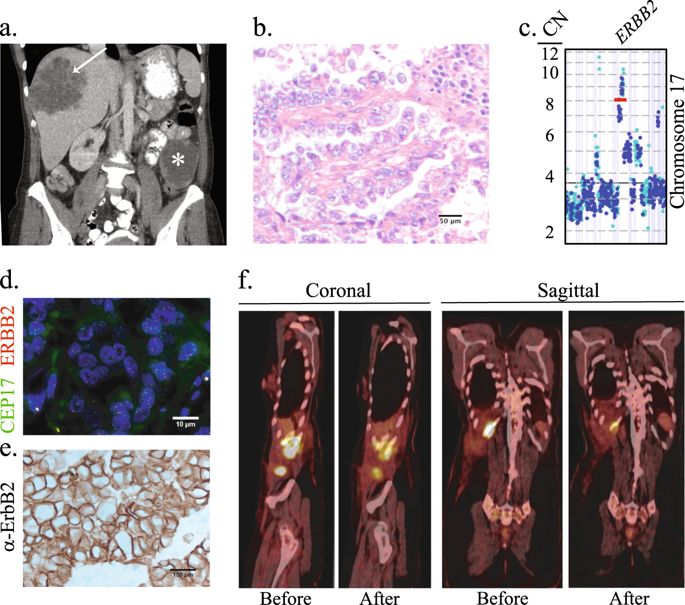npj Precision Oncology ( IF 6.8 ) Pub Date : 2018-07-11 , DOI: 10.1038/s41698-018-0060-3 Roberto Vargas , Priyanka Gopal , Gwendolyn B. Kuzmishin , Robert DeBernardo , Shlomo A. Koyfman , Babal K. Jha , Omar Y. Mian , Jacob Scott , Drew J. Adams , Craig D. Peacock , Mohamed E. Abazeed

|
There has been little progress in the use of patient-derived xenografts (PDX) to guide individual therapeutic strategies. In part, this can be attributed to the operational challenges of effecting successful engraftment and testing multiple candidate drugs in a clinically workable timeframe. It also remains unclear whether the ancestral tumor will evolve along similar evolutionary trajectories in its human and rodent hosts in response to similar selective pressures (i.e., drugs). Herein, we combine a metastatic clear cell adenocarcinoma PDX with a timely 3 mouse x 1 drug experimental design, followed by a co-clinical trial to longitudinally guide a patient’s care. Using this approach, we accurately predict response to first- and second-line therapies in so far as tumor response in mice correlated with the patient’s clinical response to first-line therapy (gemcitabine/nivolumab), development of resistance and response to second-line therapy (paclitaxel/neratinib) before these events were observed in the patient. Treatment resistance to first-line therapy in the PDX is coincident with biologically relevant changes in gene and gene set expression, including upregulation of phase I/II drug metabolism (CYP2C18, UGT2A, and ATP2A1) and DNA interstrand cross-link repair (i.e., XPA, FANCE, FANCG, and FANCL) genes. A total of 5.3% of our engrafted PDX collection is established within 2 weeks of implantation, suggesting our experimental designs can be broadened to other cancers. These findings could have significant implications for PDX-based avatars of aggressive human cancers.
中文翻译:

案例研究:源自患者的透明细胞腺癌异种移植模型纵向预测治疗反应
在使用患者来源的异种移植物(PDX)指导个体治疗策略方面进展甚微。在某种程度上,这可以归因于在临床可行的时间内成功植入并测试多种候选药物的操作难题。还不清楚祖传肿瘤是否会响应于相似的选择压力(即药物)而在其人类和啮齿动物宿主中沿相似的进化轨迹进化。在此,我们将转移性透明细胞腺癌PDX与适时的3只小鼠x结合使用1种药物实验设计,然后进行一项临床试验,以纵向指导患者的护理。使用这种方法,我们可以准确地预测小鼠的肿瘤反应与患者对一线治疗的临床反应(吉西他滨/ nivolumab),耐药性的发展以及对二线反应的相关性,从而准确预测对一线和二线治疗的反应在患者中观察到这些事件之前进行了紫杉醇/紫杉醇/奈拉替尼治疗。PDX对一线疗法的治疗耐药性与基因和基因组表达的生物学相关变化相吻合,包括I / II期药物代谢的上调(CYP2C18,UGT2A和ATP2A1)和DNA链间交联修复(即, XPA,FANCE,FANCG和FANCL)基因。我们植入的PDX集合中有5.3%在植入后2周内建立,说明我们的实验设计可以扩展到其他癌症。这些发现可能会对侵略性人类癌症的基于PDX的化身产生重大影响。











































 京公网安备 11010802027423号
京公网安备 11010802027423号